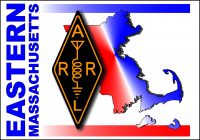Contents
Introduction
This document is an attempt to manage bulk traffic while still providing adequate traffic to the local nets. This document allows the local net traffic handler to make the final decision as to the disposition of bulk traffic that they accept from the net.
While we welcome traffic on our local nets for training purposes, we have decided to implement a bulk-mail handling practice due to the following factors:
- An increasing number of messages which have been originated by traffic handlers throughout the US and sent to other amateurs whose call signs, names and addresses are taken from an FCC database list. Generally these originators are unknown to the recipients.
- Often times these messages say much the same thing and/or are addressed to the same recipients
- A decreasing number of stations willing to deliver traffic, particularly of a non-personal nature
After discussion among the local traffic handlers in our section, we have concluded that the guidelines that follow are necessary for the health of the local traffic nets.
Guidelines
The difference between what we will call “personal traffic” and “bulk traffic” can often be determined by the nature of the message. Obviously traffic of a personal nature would be classified as “personal traffic”. This could include for example congratulations to someone for an accomplishment, an award or some action taken, such as acquiring a new license, a license upgrade or joining an organization. In other words, the addressee’s actions define the purpose of the origination. Bulk traffic would include other traffic which is known to be sent in volume with same texts, and does not follow under the above description of personal traffic.
In an attempt to make clear to local net participants what is considered “personal traffic” and what is potential “bulk traffic”, listing will now be offered on the local nets under two categories:
Category “A” Traffic – Is personal traffic
Category “B” Traffic – known bulk traffic
If there is uncertainty as to the classification, messages should be listed as Category A. The receiving operator can then make the final determination.
Category A traffic (if any) is always listed first followed by Category B traffic.
Example:
“The net is holding Category A traffic for Boston and Hingham as well as Category B traffic for Rockport and Quincy…”
Traffic is handled on the net following standard net procedures. Traffic is also credited per standard SAR/PSHR standards.
Final Disposition of Bulk Traffic – Taken
Once a message has been accepted and rogered, Category A traffic should be handled per standard procedures.
The final disposition of Category B traffic is at the discretion of the delivering station. It can be delivered to its final destination by standard procedures or it can be handled by sending a service message back to the originating station, using the suggested text:
BT
Your message _____ received from the (local net name) Traffic Net on
Month Day Time UTC X 73
BT
The Service message sent is credited per normal SAR/PSHR Standards.
Final Disposition of Bulk Traffic – Not Taken
If Category B traffic is not taken by any local traffic handler, the person holding the traffic has two options:
- Deliver the traffic using standard procedures
- Send an ARL Sixty Seven message back stating that it is undeliverable using the suggested text:
BT
ARL Sixty Seven (msg number) X
No Outlet X 73
BT
Either way the message sent is credited per normal SAR/PSHR Standards.
Summary
The intention of this policy is to allow the traffic handler to gain proficiency in standard message handling while not unduly subjecting both themselves and the final recipient to unwanted spam traffic.

